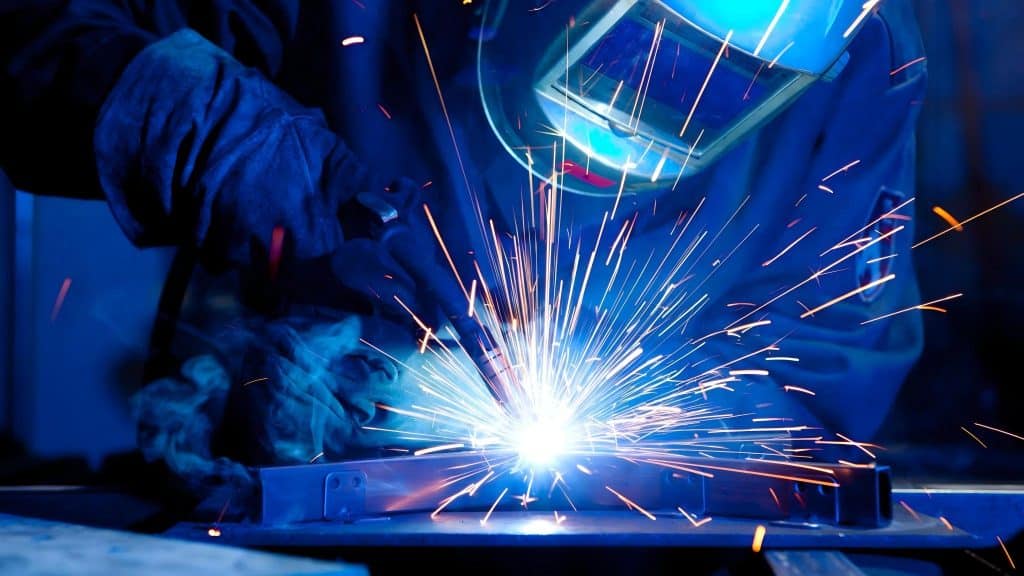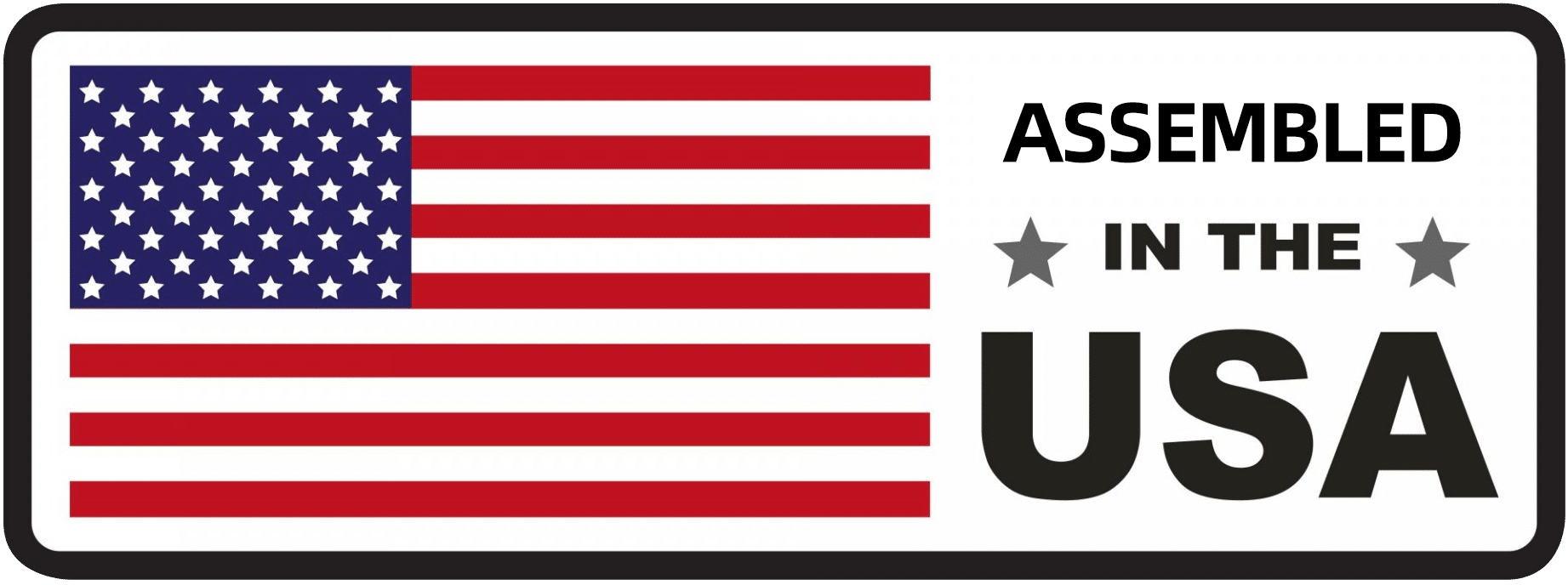
Laser welding comes in various forms as it operates across industries, like electronics, automotive, and metal fabrication. It is imperative for manufacturers to apply the appropriate types of laser welding to achieve optimal and reliable weld quality.
Read on and determine various forms of laser welding technology.
What Is Laser Welding?
Laser welding is a modern welding technique that uses highly-concentrated and high-temperature beam of light to melt and fuse workpieces. A laser welding machine hits the workpiece with top-level precision, which ensures small heat-affected zone (HAZ) and minimal material distortion.
This welding method is also significantly faster compared to old-school methods, such as MIG and TIG welding. Laser welding is about four to ten times faster than TIG, while two to three times faster than MIG. The ultra-fast penetration and welding rate of laser welding is attributed to the high power density and extreme precision of the laser beam that hits the workpieces. The metals can melt in seconds and also cools down quickly (as the HAZ is minimal).
The Main Types of Laser Welding
Laser welding can be classified based on their mechanisms, benefits, and typical industrial applications.
Conduction Welding
Also referred to as “heat conduction welding”, Conduction welding uses a focused laser beam to melt the materials at the joint interface and fuse the parts together. From the name itself, the laser’s heat is transferred via conduction or direct contact during the laser welding process.
Conduction welding is effective for thin metal sheets where heat penetration needs to be controlled to prevent burn-through.This process is also often applied in non-ferrous metals like copper and aluminum.
Keyhole (Penetration) Welding
In this laser welding type, the beam forms a deep and narrow weld with an aspect ratio of about >1.5. A portion of the material vaporizes to form a “keyhole”, which serves as a channel for the beam to penetrate deeply into the workpiece.
This technique is ideal when fusing thick metal parts that require strong and reliable welds. For instance, most car makers apply keyhole laser welding to assemble body panels and chassis parts because the process makes deep, narrow welds swiftly at a high precision. In aerospace, engineers utilize this method to join critical components like fuel tanks and engine components, where deep penetration and a small heat-affected zone are vital to ensure material longevity and reliability.
Hybrid Laser Arc Welding
In Hybrid laser arc welding, a high-powered laser beam is applied in conjunction with a traditional arc welding process (e.g. GMAW or TIG welding). The laser beam and the electric arc work together on the same weld pool. The laser delivers concentrated energy for deep penetration, while the arc provides additional heat and molten filler metal. This combination creates a more stable and flexible welding environment. The arc helps bridge gaps and improves metal transfer, while the laser ensures precise and deep welds.
Pulsed Laser Welding
This type of laser welding uses a laser beam delivered in short and controlled bursts instead of a single, continuous stream. Each pulse delivers a high amount of energy in a brief period, that slowly melts a small portion of the material. The timing and intensity of these pulses can be adjusted to suit different materials and thicknesses.
Some of pulsed laser welding applications are in the production of fine wires, sensors, battery tabs, and microcircuits in the electronics industry. Since pulsed laser welding applies controlled bursts of beam hitting the workpieces slowly, the electronics’ sensitive parts safe from material distortion or damage.
Another common application is in the jewelry and watchmaking. Pulsed laser welding enables craftspeople to repair or assemble intricate jewelry pieces without harming decorative surfaces or heat-sensitive stones.
Continuous Wave Laser Welding
Unlike pulsed laser welding, which sends energy in bursts, CW laser welding keeps the beam on for the entire welding process. The laser beam delivers a steady and uninterrupted energy stream to the workpiece, which melts the material along the joint and forms a continuous weld pool.
This process is common in the automotive industry for the assembly of car bodies, structural components, and battery packs, where long, continuous welds are essential to form a high-strength weld. In the aerospace sector, manufacturers rely on CW laser welding to join thick panels and critical joints in airframes or engine parts. Electronics manufacturing also benefit from the process when making continuous seams on housings or connectors.
Denaliweld’s Water Cooled Fiber Laser Welding Machine is a cutting-edge laser welding solution that operates using continuous laser. This machine supports up to 3000W of continuous laser output that ensures consistent and efficient performance across a range of applications. It also features a water-cooled modular design for easy maintenance and repair that results to minimal downtime and optimal cooling.
What Lasers Are Used in Welding?

We can also classify laser welding according to their laser source. Enumerated below are the most common lasers applied in welding.
Fiber: Uses optical fibers doped with rare-earth elements (like ytterbium) to generate and deliver the laser beam. Ideal for precision welding tasks in industries like automotive manufacturing, electronics, and medical device production.
Carbon Dioxide (CO2): Applies a carbon dioxide gas mixture to generate infrared light beam. This laser welding source is known for their high power and reliability to weld thick metal sheets. Commonly applied in heavy industries, such as shipbuilding, construction, and the fabrication of large machinery.
Diode Lasers: The main laser source is semiconductor diodes that offer a compact, efficient, and lower cost direct beam delivery. This laser welding technology is easy and seamless to integrate into automated systems.
Explore Different Types of Laser Welding for Optimal Weld With Denaliweld
The success of a laser welding operation relies not only on the operator’s skills and machine performance. It also highly depends on the application of the correct laser welding method. Manufacturers must understand the nature of their workpieces and project requirements to pick the optimal laser welding type for their production.
For leading-edge laser welding solutions, choose Denaliweld. We are a global manufacturer of high-class laser welding machines for all types of laser welding applications. All of our products are CE/SGS/WPQR-certified, which guarantee advanced component engineering, robust performance, safety measures, and intuitive controls. Visit Denaliweld today.



